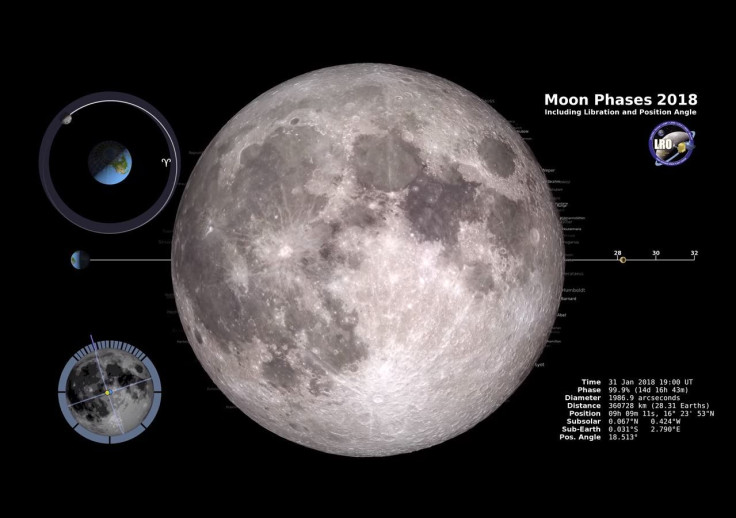NASA Previews Supermoon’s Total Lunar Eclipse Coming This Month

The New Year’s supermoon has come and gone but there are a lot more lunar events to be excited about in 2018, including another supermoon that coincides with a total lunar eclipse. And NASA is giving a preview of each one of them.
The space agency’s “Dial-A-Moon” feature lets moon enthusiasts zip through the year, seeing what Earth’s natural satellite will look like in the future. That includes a look at another supermoon at the end of January that will be cloaked in orange and red as the Earth eclipses light from the sun.
People in the western part of North America and eastern Asia will be able to see the Jan. 31 total lunar eclipse, NASA has reported. A partial eclipse will hang over eastern North America early in the morning.
The supermoon on Jan. 1 was the largest of the year and a “Wolf Moon,” with the name referring to a full moon that classically occurred in the winter, with wolves howling at it out of hunger. Although the Jan. 31 supermoon will be a little smaller, Dial-A-Moon shows that it will still be large and bright.
You can learn all about supermoons and the way the Moon moves here: https://t.co/RyquJBUVNS pic.twitter.com/Nls85wGuaE
— NASA Moon (@NASAMoon) January 1, 2018
Supermoons refer to a full moon that appears roughly at the same time of the point of the lunar orbit that is closest to Earth, known as perigee. The boost in proximity can give the illusion of a larger and brighter moon — up to 14 percent bigger and 30 percent brighter. That difference is easiest to see when the moon is closest to the horizon, as being in that position in the sky also enhances its appearance.
Perigee is about 30,000 miles closer to Earth than the farthest point in the moon’s orbit, known as apogee. This is possible because the lunar orbit is an ellipsis, not a perfect circle.
NASA has released a Dial-A-Moon feature for the last several years for those interested in taking a look into the lunar past.
When Wednesday, Jan. 31, rolls around, the moon will reach its full phase in the early morning, close to 5 a.m. EST.
For those without the time to manually flip through the dozen lunar cycles of the year, NASA also released videos that show the upcoming phases for both the northern and southern hemispheres. The videos include tags indicating lunar landmarks.
© Copyright IBTimes 2024. All rights reserved.




















